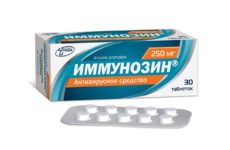Polyoxidonium is a drug that belongs to the group of immunostimulants. It is often prescribed as an additional therapy to increase the body’s defenses.
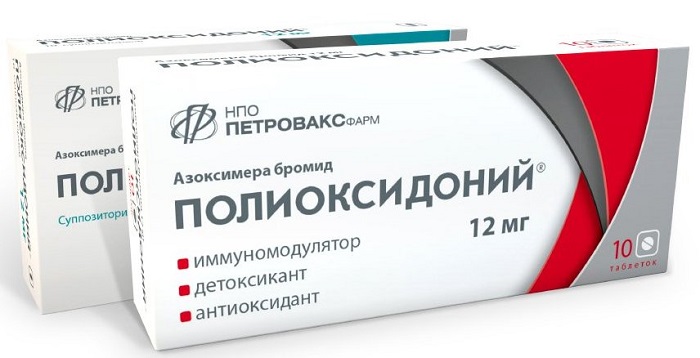
Содержание:
At what age can you take
Polyoxidonium is prescribed for babies whose age has reached six months – this age is indicated in the instructions. However, it is impossible to prescribe the drug to a child on his own.
This can only be done by a pediatrician after a consultation – he will take into account possible allergic reactions and individual intolerance to the components of the medication.
How to take the drug: instructions for use
Polyoxidonium comes in several forms. Each of them has its own characteristics for use.
In the form of a lyophilisate
This form is used to prepare injection solutions.
For intramuscular administration, Polyoxidonium (with a dosage of 3 mg) is diluted in 1 ml of water for injection (it can be replaced with 0.09% sodium chloride solution).
After combining the drug and the solvent, it is left for several minutes – during this time it will swell. After that, the mixture is stirred, but at the same time it is impossible to shake the vial, only rotational movements are made.
For intravenous administration, you need to take 2 ml of a 0.09% sodium chloride solution. The cooking method is the same as in the previous case.
The introduction of the solution into the nose
Nose drops are also prepared from lyophilisate. To do this, 1 ml of the solvent is added to the vial with the medication (dosage 3 mg). As a solvent can be:
- boiled water cooled to room temperature;
- distilled water;
- saline.
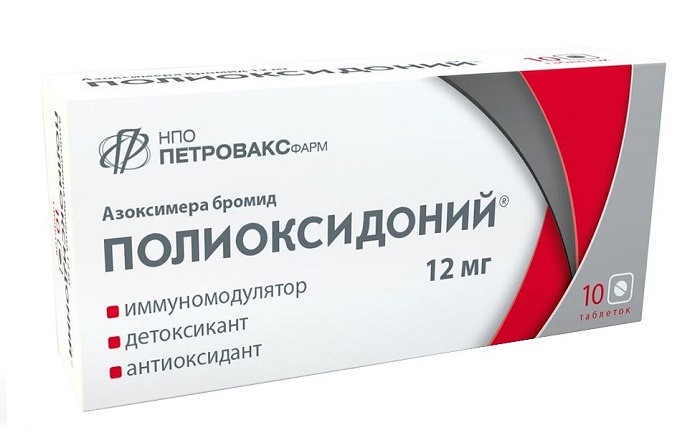
After adding 1 ml of solvent, 20 nasal drops are obtained (each drop contains 0.15 mg of azoximer). Usually, the daily dose of drops is calculated based on the patient’s body weight – for every kilogram there is 1 drop of the drug. A third of the daily dose is instilled at a time.
Pills
The medication is taken twice a day for half an hour before meals. Adults and children over 10 years old are prescribed 1 tablet at a time, children from 3 to 10 years old – half a tablet at a time.
The duration of the course is 7 days. If necessary, the course is repeated after 3-4 months. In this case, the effectiveness of the drug does not decrease.
Suppositories rectal and vaginal
Candles with a dosage of 12 mg are used only by adults. Candles with a dosage of 6 mg are allowed for children over 6 years of age, but only for rectal administration.
Adults can administer suppositories rectally and vaginally, depending on the type of disease.
How to use vaginal suppositories:
- take a shower, lie on your back;
- insert the suppository as close as possible to the cervix;
- within half an hour after entering do not get up.
Application schemes:
- 1 candle daily for 10 days;
- 1 candle for 3 days in a row, then every other day – according to this scheme, enter until 20 pieces run out;
- three days in a row, 1 piece, then twice a week for 30 days.
How to use rectal suppositories:
- suppositories are administered at bedtime after defecation or rectal cleansing with an enema;
- before the procedure, wash your hands, take a candle and warm it in your palms;
- the patient lies on his side and slightly bends his legs at the knees;
- the candle is inserted into the anus and advanced to the distance of half the middle finger (when introducing the suppository to the child, the depth is checked with his finger);
- don’t get up for half an hour.
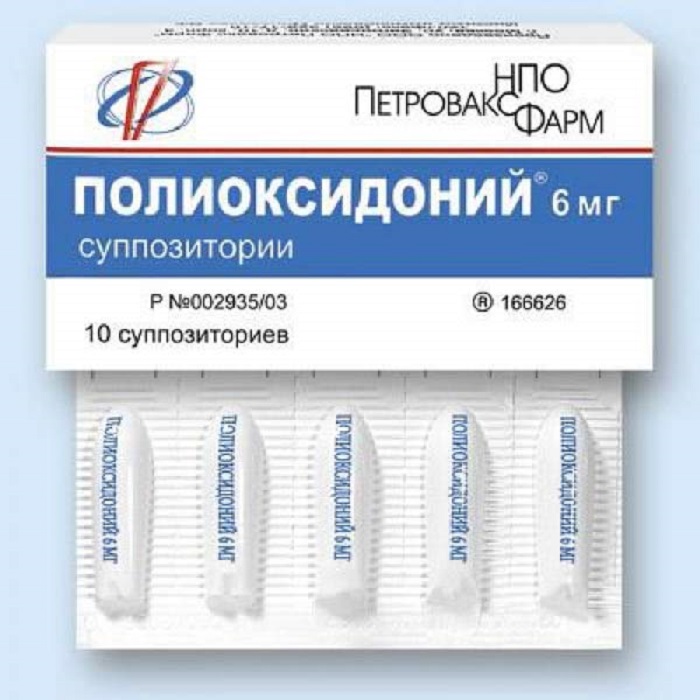
Schemes of application are the same as in the case of vaginal suppositories.
Features of use for children (abstract)
Polyoxidonium has a positive effect on the children’s body. However, in the following cases, it is better to refrain from taking it:
- individual intolerance to the components;
- allergic reaction to lactose;
- chronic insufficient kidney function.
The age at which it is allowed to take the drug depends on the form of its release:
- tablets are allowed from 3 years old – in this case they need to be dissolved under the tongue (however, experienced pediatricians recommend refraining from prescribing tablets for children under 10 years of age;
- suppositories are used from the age of 6 and only by the rectal method;
- the use of injections and drops in the nose is allowed from six months.
When taking Polycosidonia, allergic reactions may occur. In rare cases, a seal appears at the injection site, and the temperature rises after the injection.
Normally, all these reactions should pass after a day. If this does not happen, you need to contact a doctor who will change the dosage or replace the medicine with a similar one.
Use during pregnancy and lactation
As for the use of Policosidonia during childbearing or breastfeeding, there are no official data on this subject, since no studies have been conducted in this direction.
If there is a need to use the drug, it is best to consult a doctor. He will be able to realistically assess the possible risks of such therapy, and its feasibility.
Overdose
Over the entire period of implementation of Polyoxidonium, there was no case of an overdose that would lead to negative consequences.
If the patient has taken more than the prescribed dose, he should immediately report this to the doctor, who will assess the patient’s condition and give further instructions.
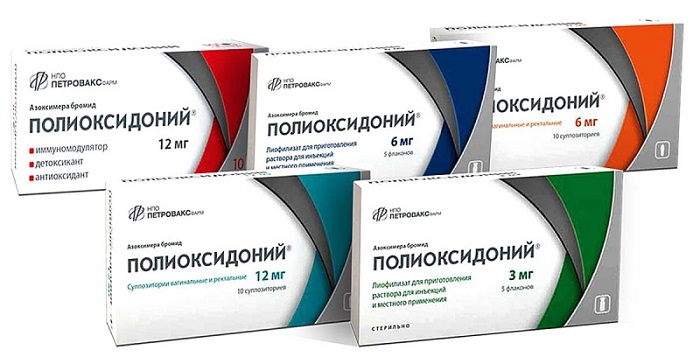
Side effects
There were no side effects when taking the tablets. The drug is easily tolerated by the body, without causing digestive disorders and other complications.
When using Polyoxidonium in the form of a suppository, in rare cases, allergic reactions are possible – itching, rash, burning or redness (usually this occurs only in the injection area).
It is extremely rare that the injection site thickens or reddens after injections. The body temperature may also rise slightly to 37-38 degrees.
Contraindications
The use of Polyoxidonium should be abandoned in the following cases:
- individual intolerance to the components of the drug;
- kidney failure;
- pregnancy;
- lactation period;
- children’s age up to 6 months (in some cases even older);
- lactose intolerance.
Interaction with other drugs
The drug is easily combined with other drugs. It is often prescribed in combination with NSAIDs, antihistamines, antifungal, antiviral drugs, as well as vitamins or dietary supplements.
The use of a drug with antibiotics has a double whammy on pathogens. In addition, the use of Polyoxidonium with antibiotics has another significant advantage – the drug increases immunity and reduces the risk of complications.
Storage conditions
The drug is stored in a dark dry place inaccessible to children at a temperature of 2 to 16 degrees above zero. The shelf life of the drug in a closed package is 24 months.
Holiday conditions
Polyoxidonium is available without a prescription.
Conclusion
Polyoxidonium is a drug that is used as an additional therapy for various diseases. The drug improves immunity and helps to cope with diseases faster.




